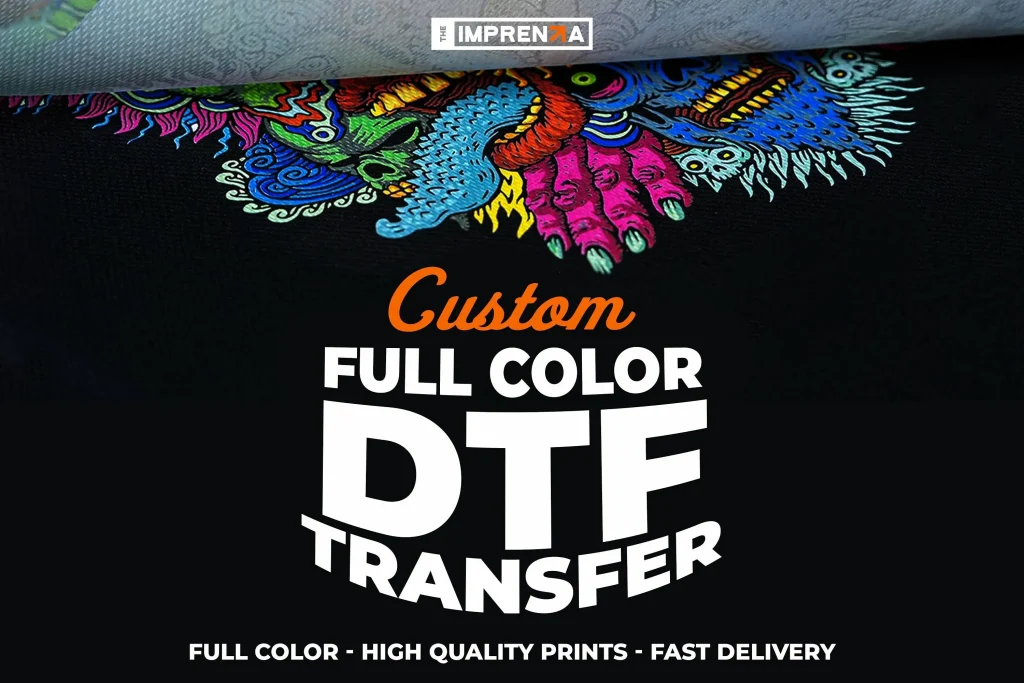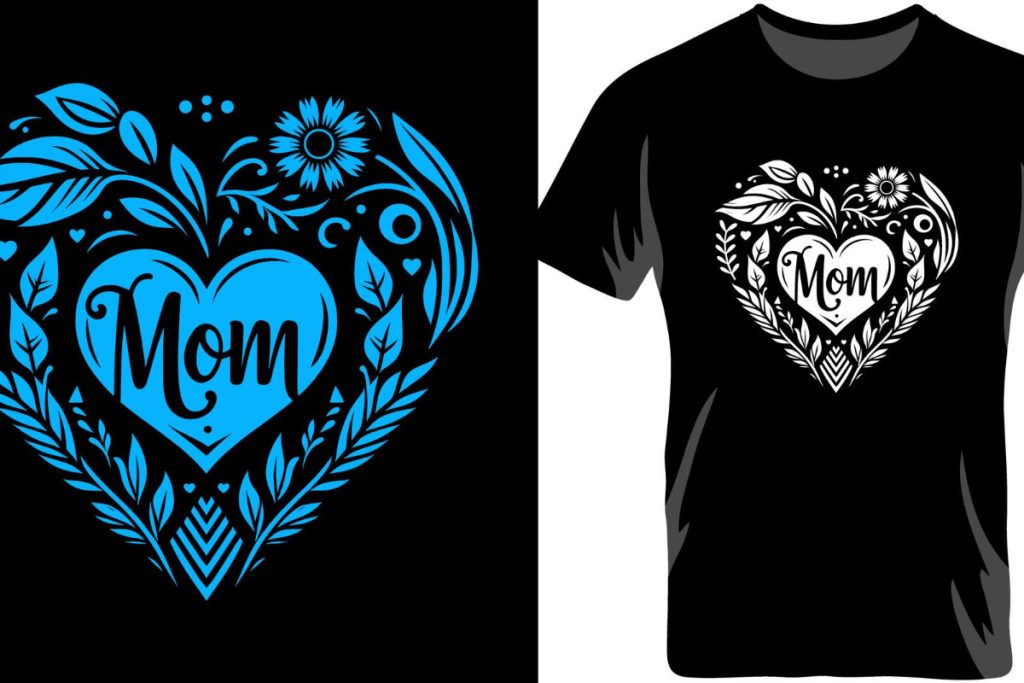Are you ready to dive into the world of DTF transfers? Direct-to-Film (DTF) printing is revolutionizing the textile industry, offering vibrant and high-quality designs that anyone can master with a bit of practice. This beginner-friendly guide aims to simplify the DTF printing process and provide essential tips for achieving stunning results. From understanding crucial equipment to troubleshooting common issues, we’ll cover everything you need to start your journey. With the right knowledge and tools, creating eye-catching DTF transfers can become your new favorite craft!
DTF transfer methods, also known as Direct-to-Film transfer techniques, have emerged as a game-changer for both novice and experienced printers in the fabric design space. This innovative approach enables users to print designs onto a special film that can be easily transferred onto various materials, allowing for stunning prints across different fabrics. In this guide, we’ll explore vital processes, valuable DTF printing tips, and a comprehensive beginner’s guide to DTF for seamless application. Additionally, we’ll address common pitfalls and provide troubleshooting DTF transfer strategies to enhance your printing experience. Unlock the full potential of your creative endeavors with these valuable insights!
Understanding the DTF Printing Process
DTF printing, or Direct-to-Film printing, revolutionizes the way designs are transferred onto fabrics. By using a specialized printer to print designs onto a film, which is then applied to fabric with heat, this method provides versatility in terms of materials used and design intricacy. Unlike traditional printing methods, DTF allows for vibrant color reproduction and fine details that can stand out on various fabric types, including cotton and polyester blends.
The DTF printing process begins with the creation of digital artwork, which is printed onto a DTF film. This film is coated with a special adhesive powder before being heat pressed onto the desired fabric. The unique attributes of DTF technology mean that it can be used for a wide range of applications, from custom apparel to promotional items, making it an appealing option for creators seeking flexibility in their printing methods.
Essential Equipment for DTF Printing Success
To embark on your DTF printing journey, acquiring the right equipment is crucial. The core components include a DTF printer, heat press, and DTF-specific inks and films. Reputable brands like Epson and Mimaki offer reliable printers specifically designed for DTF printing, which help in producing exceptional prints. A heat press with adjustable settings ensures that varying fabric types are treated appropriately during the transfer process, minimizing errors.
Furthermore, choosing the correct DTF inks and films is vital for successful transfers. The films must have a coating that enables excellent transfer to the fabric once heat is applied. Investing in high-quality inks that match your printer’s specifications can also prevent issues like ink clogging and fading prints, promoting a smooth and effective printing experience.
Using graphic design software, beginners can create vibrant designs that can be printed using DTF technology. Popular programs like Adobe Illustrator or CorelDRAW allow creators to craft high-resolution images, which are essential for maintaining the color accuracy of the final print when converting from RGB to CMYK.
By meticulously preparing an eye-catching artwork and ensuring it meets all technical requirements, beginners can lay the groundwork for successful DTF printing projects.
Mastering the Transfer Process for DTF Printing
Executing the transfer process with precision is a pivotal aspect of DTF printing. After printing the design onto a special film, the next step involves sprinkling a fine layer of adhesive powder over the wet ink. This powder adheres to the ink, ensuring that it will stick firmly to the fabric during the heat transfer. The quantity of adhesive used can significantly influence the durability and quality of the final print.
The actual heat pressing stage is crucial and must be done correctly to achieve optimal results. Setting the heat press to the appropriate temperature—typically around 320°F—and applying the right amount of pressure for the recommended time (usually between 10 to 15 seconds) is essential. Depending on the fabric type, these settings may vary, so it’s crucial to refer to specific guidelines to avoid issues like peeling or insufficient adhesion.
Troubleshooting Common DTF Printing Issues
As beginners dive into the exciting world of DTF printing, they may encounter various challenges that can impede their success. Common issues include peeling or fading prints, which often arise from improper heat settings or inadequate pressure during the transfer process. Regularly checking and adjusting your heat press settings in relation to the material type can help alleviate these problems and lead to more consistent results.
Another frequent hurdle in DTF printing is ink clogging, which can occur if proper maintenance practices aren’t followed. Regularly cleaning the printer heads and conducting routine checks help maintain a smooth ink flow and prevent impediments to your printing endeavors. To ensure your DTF printing experience is as successful as possible, investing time in troubleshooting and understanding these challenges is critical to mastering this innovative printing method.
Beginner’s Guide to DTF Printing: Tips for Success
For newcomers to the DTF printing scene, following a structured guide can significantly improve the learning curve. Begin by familiarizing yourself with the essential steps involved in the DTF printing process, which includes selecting the right equipment, preparing your artwork, and understanding how to effectively transfer your designs onto fabric. Documenting your experiences and results will also help you clarify which techniques yield the best outcomes.
Additionally, engaging with online communities of DTF printing enthusiasts can provide valuable insights and tips for success. Other beginners may share their experiences, offer troubleshooting advice, and highlight the most common pitfalls to avoid. Leverage these resources to expedite your learning process and enhance your DTF printing techniques.
Advanced DTF Printing Techniques and Innovations
Once you have grasped the basics of DTF transfers, exploring advanced techniques can elevate your craft. Innovations in DTF printing technology, such as integration with automated systems or exploring multi-layer designs, allow for more complex and unique prints that stand out. Experimenting with different fabric types and combinations will expand your creative options and result in exciting new product offerings.
Moreover, keeping up with upcoming trends in the DTF printing industry is important for staying competitive. Attend workshops or webinars led by industry experts, read up on new products, and network with other professionals. Continuous learning and adaptation to new techniques will ensure that you not only master the basics but also succeed in the dynamic environment of DTF printing.
Frequently Asked Questions
What are the essential DTF printing tips for beginners?
For beginners, essential DTF printing tips include investing in a reliable DTF printer like those from Epson and Mimaki, using high-quality DTF inks and films, and properly preparing your artwork in graphic design software. Always follow correct color matching practices and conduct test transfers to find the ideal temperature and pressure settings for your specific fabric types.
How do I perform DTF transfers successfully?
To perform DTF transfers successfully, first print your design onto a special film, apply adhesive powder on the wet ink, and then heat press the design onto the fabric at approximately 320°F for 10-15 seconds. Adjust the pressure and timing according to the specific fabric you are using to ensure optimal transfer results.
What is the DTF printing process?
The DTF printing process involves printing a design on a special film, applying adhesive powder to the wet ink, and heat pressing it onto the chosen fabric. This technique allows for vibrant, detailed transfers on various materials while providing more flexibility compared to traditional printing methods.
What are common troubleshooting tips for DTF transfers?
Common troubleshooting tips for DTF transfers include addressing issues like peeling or fading prints by checking the heat and pressure settings of your heat press. Additionally, avoiding ink clogging by performing regular maintenance on your printer can help ensure consistent prints and smooth operation.
What should I know in my beginner’s guide to DTF transfers?
In your beginner’s guide to DTF transfers, you should familiarize yourself with essential equipment such as DTF printers and heat presses, learn about the importance of artwork preparation and color matching, and practice with different fabric settings. Testing and adjusting your methods will significantly enhance your success.
How can I ensure quality results in DTF transfers?
To ensure quality results in DTF transfers, focus on using high-resolution artwork, choose the correct DTF specifications for inks and films, and pay close attention to the heat press settings. It’s also beneficial to conduct test runs with various materials to understand their behavior under heat and pressure for the best outcomes.
| Key Points | Details |
|---|---|
| What is DTF Printing? | A method of printing where designs are printed on film and transferred onto fabric, allowing for vibrant colors and flexibility with various materials. |
| Essential Equipment | 1. DTF Printer: Reliable options include Epson and Mimaki. 2. Heat Press: Adjustable temperature and pressure settings are necessary. 3. DTF Inks and Films: Use specific inks and films for clean transfers. |
| Preparing Artwork | Use graphic design software to create high-resolution designs. Pay attention to color matching using RGB and CMYK settings for accurate representation. |
| The Transfer Process | 1. Apply adhesive powder on the wet ink after printing. 2. Use a heat press at 320°F for 10-15 seconds to transfer designs, adjusting for fabric types as needed. |
| Testing and Experimentation | Conduct test runs with scrap fabric to determine optimal temperature and pressure settings for different materials. |
| Troubleshooting Common Issues | Common issues include peeling or fading prints from inadequate pressure and ink clogging. Regular maintenance of equipment is essential. |
Summary
DTF Transfers provide a unique and innovative method for creating vibrant textile designs, making it an exciting option for both beginners and seasoned printers. Embracing DTF transfers allows you to explore creative possibilities in textile printing through the use of specialized equipment and techniques. By understanding the intricate processes involved—from the initial design stage to successful transfers—you can produce high-quality prints on various fabrics. With continuous practice and troubleshooting, your DTF printing skills will evolve, enabling you to craft impressive designs that stand out in the market.



